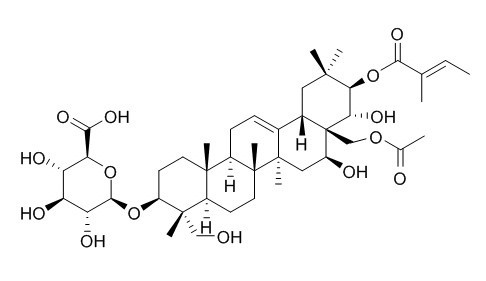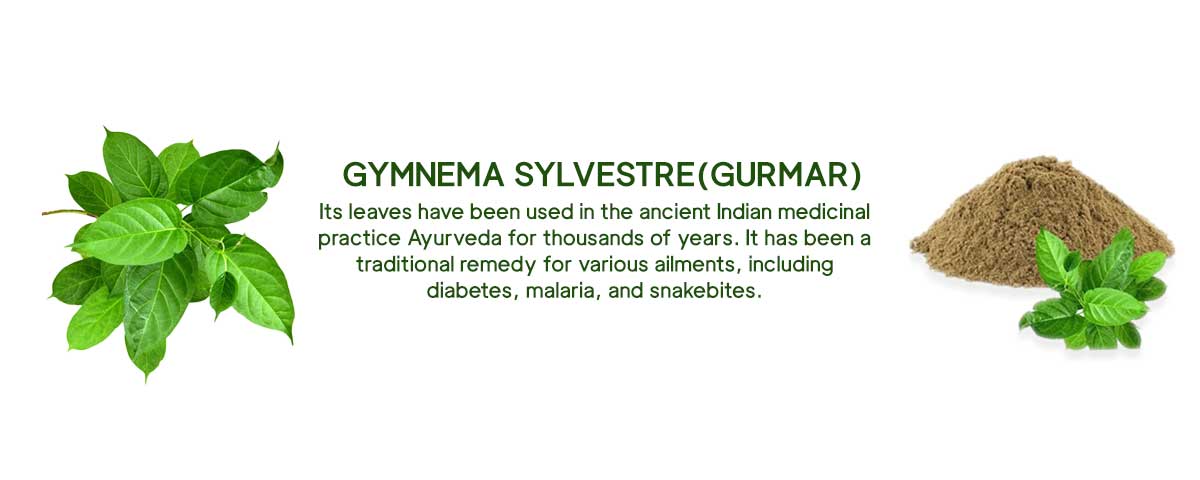Gymnema Sylvestre is a woody climbing shrub that’s native to the tropical forests of India, Africa and Australia. Its leaves have been used in the ancient Indian medicinal practice Ayurveda for thousands of years. It has been a traditional remedy for various ailments, including diabetes, malaria and snakebites.
This herb is thought to inhibit sugar absorption and thus has become a popular study subject in Western medicine.
What is Gymnema sylvestre?
Leaves of Gymnema sylvestre widely used medicinal plant of India belongs to family Asclepiadaceae. It is commonly known as madhunashini in Sanskrit and also Gurmar, “meaning sugar (Madhu) destroying (nashini). It is a good source of a large number of bioactive substances .The plant has deep roots in history, used in Ayurvedic system of medicine to treat various types of diseases diabetes, malaria,and to cure snakebites and its phytoconstituents responsible for sweet suppression activity.
Chemical Constituent
The leaves of Gudmar contain triterpene saponins belonging to oleanane and dammarene classes. Oleanane saponins are gymnemic acids and gymnemasaponins, while dammarene saponins are gymnemasides. Its leaves also contain resins, albumin, chlorophyll, carbohydrates, tartaric acid, formic acid, butyric acid, anthraquinone derivatives, inositole alkaloids, organic acid (5.5%), parabin, calcium oxalate (7.3%), lignin (4.8%), and cellulose (22%).

Mechanism of action
Gurmar prevents absorption of glucose in blood, blocks sugar receptor in intestine which prevents absorption of sugar by intestine. It helps in regenerating insulin and beta cells which increase secretion of insulin. These further leads to reduce blood sugar level and shows antidiabetic activity.
Safety
- Gurmar is possibly safe when used appropriately for up to 20 months.
- Studies have shown the toxic effect of Gurmar extract when taken agains the recommended doses.
Clinical Evidences
Decrease In Blood Glucose Level
In a study, oral administration of small concentrations (0.2 g/kg) of this plant produced a reduction in the elevated levels of blood sugar induced by sucrose (Kang et al., 1990). However, Galletto et al. (2004) also informed an absence of anti-diabetic activity of Gymnema sylvestre in an alloxan treated animal model
Anti cancer activity
In another study, antitumor potential of this plant was observed when methanolic extract of Gymnema sylvestre was administered on Swiss albino mice where papillomagenesis was induced using carcinogen 7, 12 - dimethylbenz (a) anthracene (DMBA). Decreased tumor incidence, tumor burden and the cumulative number of papillomas were observed after the treatment with the plant extract
Lipid-Lowering Activity
Gymnema sylvestre extract and it was reported to lower the elevated cholesterol, triglyceride, LDL level and increase the HDL level. It was suggested that this plant renders lipid-lowering potential due to the presence of acidic constituents such as flavonoids, saponins, tannins etc. (Rachh et al., 2010; Dholi and Raparla, 2014). Similarly, in several other studies, it was reported to reduce triglyceride, cholesterol, very low‐density lipoprotein (VLDL) and low‐density lipoprotein (LDL) in diabetic rats
Health Benefits:
- Reduces sugar cravings by making sweet foods taste less appealing.
- Suppresses swollen glands.
- Helps lower blood sugar levels.
- May contribute to favourable insulin levels by increasing insulin production.
- Improves cholesterol and triglyceride levels, reducing heart disease risk.
- May aid weight loss-laxative and diuretic.






